Telmessus (Fethiye)
Q1145385Telmessus: (Greek Τελμησσός): port in Lycia, modern Fethiye.
Early history
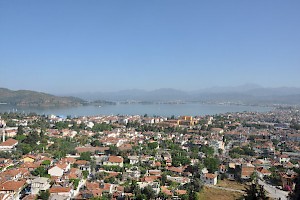
Telmessus is a very ancient city, known as Telebehi in the Lycian language. In the Archaic and Classical age, it was the capital of one of the local rulers of Lycia. Their residence was on a hilltop called Hızırlık, a bit into the interior.
In the fifth century, Telmessus was a member of the Athenian alliance, the Delian League (although not mentioned among the Lycian towns), but it lost its independence before c.420, when it was recognized as subject to Xanthus, which lost its possession in the early fourth century to a dynast named Pericles of Limyra. A generation later, the inhabitants moved to the coast, where they lived in the town that is now called Fethiye. This may have happened when the area became subject to the Achaemenian king Artaxerxes II Mnemon, and the local satrap sought ways to make control easier. The town was certainly part of the Carian satrapy in c.360, when it paid tribute to Maussolus.
Hellenistic age
The Macedonian conqueror Alexander was well-received by the city in the winter of 334/333, but lost Telmessus to a man named Antipatrides. Alexander's friend Nearchus, however, recovered the town with a strategem. In these years, a man named Amyntas was buried in Telmessus; his rock tomb, with a Ionian facade, is one of today's sights.
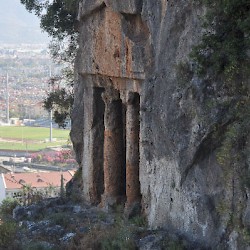 Fethiye, Tombs |
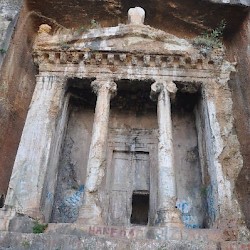 Fethiye, Tomb of Amyntas |
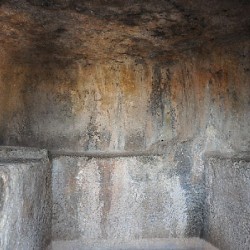 Fethiye, Tomb of Amyntas, Interior |
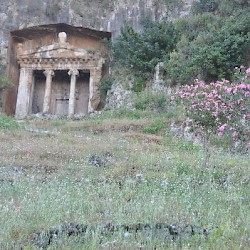 Fethiye, Tomb of Amyntas |

After Alexander's death, the town became part of the kingdom of Antigonus; after the battle of Ipsus (301), it was briefly part of the realm of a man named Cassander, until it became part of Ptolemy's kingdom. By now, the city, although a recent refoundation, was recognized as an ancient Greek town (a polis), and much was made of a myth that its founder was a Cretan prince named Sarpedon, who had been exiled by his brother Minos. This meant that the Macedonian rulers respected the city, but this did not prevent the Ptolemaean kings from giving the city away to a Carian dynast.
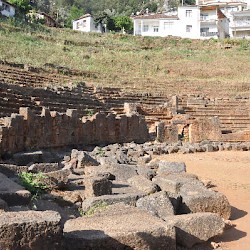 Telmessus, Theater |
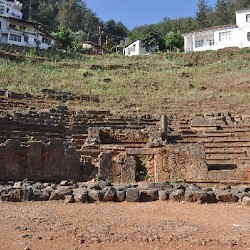 Telmessus, Theater |
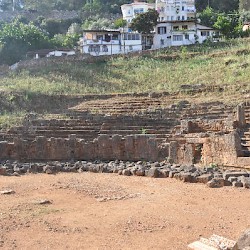 Telmessus, Theater |
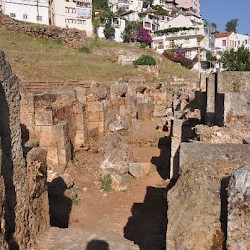 Telmessus, Theater |
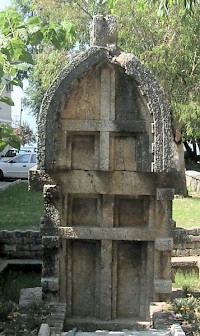
Telmessus was briefly part of the Seleucid Empire (197-188), became part of the Pergamene Empire. The theater, with some 1,500 seats, dates back to this age. When the last king of Pergamum, Attalus III, left his realm to Rome, the Senate granted Telmessus its independence. The city joined the Lycian League, and was finally annexed by Rome in 43 BCE, during the civil wars after the assassination of Julius Caesar.
Roman age
Little is known about Roman Telmessus, because modern Fethiye is built on top of it. Nevertheless, the theater, odeon, and acropolis are still visible. The town flourished because of its port, but it also benefited from the production of ceramics. Pliny the Elder refers to the production of wine.note
In the fourth century, the city had a Christian bishop. In the seventh century, the town was sacked by the Arabs, and declined, although the Byzantine emperor Anastasius II (r.713-715) tried to improve its condition. In his honor, the city was briefly called Anastasiupolis.